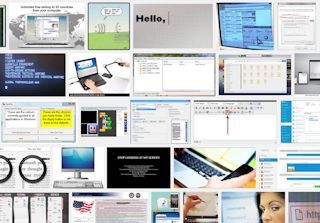

When WebAIM asked screen reader users, “Which of the following do you think is the primary reason that many developers do not create accessible web sites?”, an overwhelming majority of 72.1% replied that they believed developers simply lacked awareness or lacked the accessibility skills and knowledge. Check out the Web Accessibility in Mind (WebAIM)’s Screen Reader User Survey #8 Results to learn more. It has never been more important to understand and support the screen reader experience on both web and mobile. That means that more than 27% of the global population can benefit from screen readers, among other assistive technologies, when navigating the digital world.Īs the world of apps continues to grow, so too does the number of screen reader users who use apps. Studying Screen ReadersĪccording to the World Health Organization, there are over 2.2 billion people experiencing visual impairments at this very moment. However, it is important to be aware of as many various assistive technologies as you can be, as app developers striving to build the most accessible apps. In this blog post, I’ll be focusing primarily on-screen readers, which are used by individuals with visual impairments, to access information that is otherwise inaccessible to them.
Accessibility best screen reader software#
Assistive technologies are wide-ranging among others, they include screen readers and screen magnification software (especially helpful for individuals with visual impairments), as well as alternative keyboards and motion or eye tracking software (especially helpful for individuals with motor impairments). As such, they enable individuals experiencing disabilities to accomplish tasks, and different assistive technologies may serve the needs of individuals in different situations. Tactilely, with assistive technologies like refreshable braille displaysĪssistive technologies are tools that often reduce technological barriers that individuals may otherwise experience.Auditorily, with assistive technologies like screen readers.Visually, with the vision of a sighted individual.We have a long way to go and as we work more in this areas we’d love to hear your suggestions and feedback.If you’re reading this, chances are high that you’re reading in at least one of the following ways: There’s lots more to consider, from text sizing and color contrast to keyboard navigability and giving access to the underlying data for non-visual exploration, as shown in the example above via a simple link in the footer. Screen-reader text is only one part of the accessibility picture. What type of chart is it? What aspects or values are the most important and stand out? Try and get in all the key details while keeping the message as short as possible. Instead, use the screen reader text to provide an alternative to the visual aspect of the graphic specifically. As your titles and subtitles in Flourish visualizations will always be read out by screen readers, it doesn’t make sense to repeat these in the screen-reader description. Whether you’re designing for sighted or non-sighted users, the main title and subtitle should usually be descriptive, summarizing the main point of the graphic rather than just describing what data is being visualized.
Accessibility best screen reader how to#
How to write a good screen-reader description Under the hood, the text is added to the page as a hidden paragraph which becomes visible to screen readers via an aria-describedBy attribute on the main visual container, the contents of which gets an aria-hidden attribute.Īs part of this update, we’ve also added a title attribute to the iframes that visualizations are embedded in, to differentiate their content as “visual or interactive content”. In this mode you can write a text description that will be read out in place of the visual element when the user taps on it or when a screen reader is reading out the entire page. Hence for most visualizations, you’ll want to stick with the default setting: hidden. This is somewhere between unhelpful and deeply annoying for screen-reader users. That might be what you want for a text-based visual such as a Cards grid.įor a chart, however, the text in the main visual container is usually an unhelpful scattering of unordered data-point labels, axis labels and annotations. If you set your main visualization container to be readable, screen readers will attempt to read the content inside it. This is configured in a new “Accessibility” settings block you’ll find in all our core templates. But now you can optionally provide screen readers with an text alternative for the “main” visual part of the graphic.


Titles, subtitles and footers in your visualizations were always readable by screen readers, and that’s still true.


 0 kommentar(er)
0 kommentar(er)
